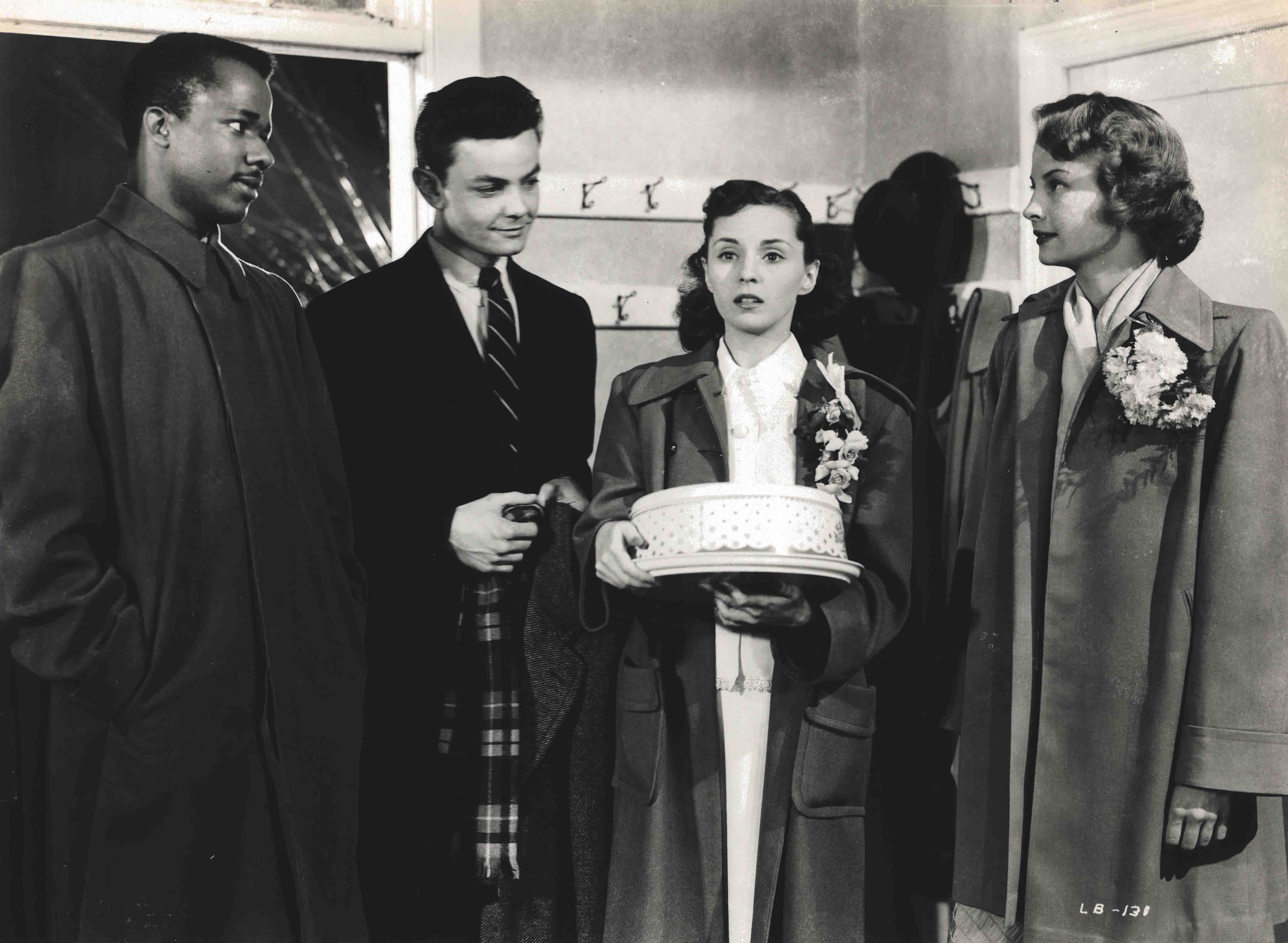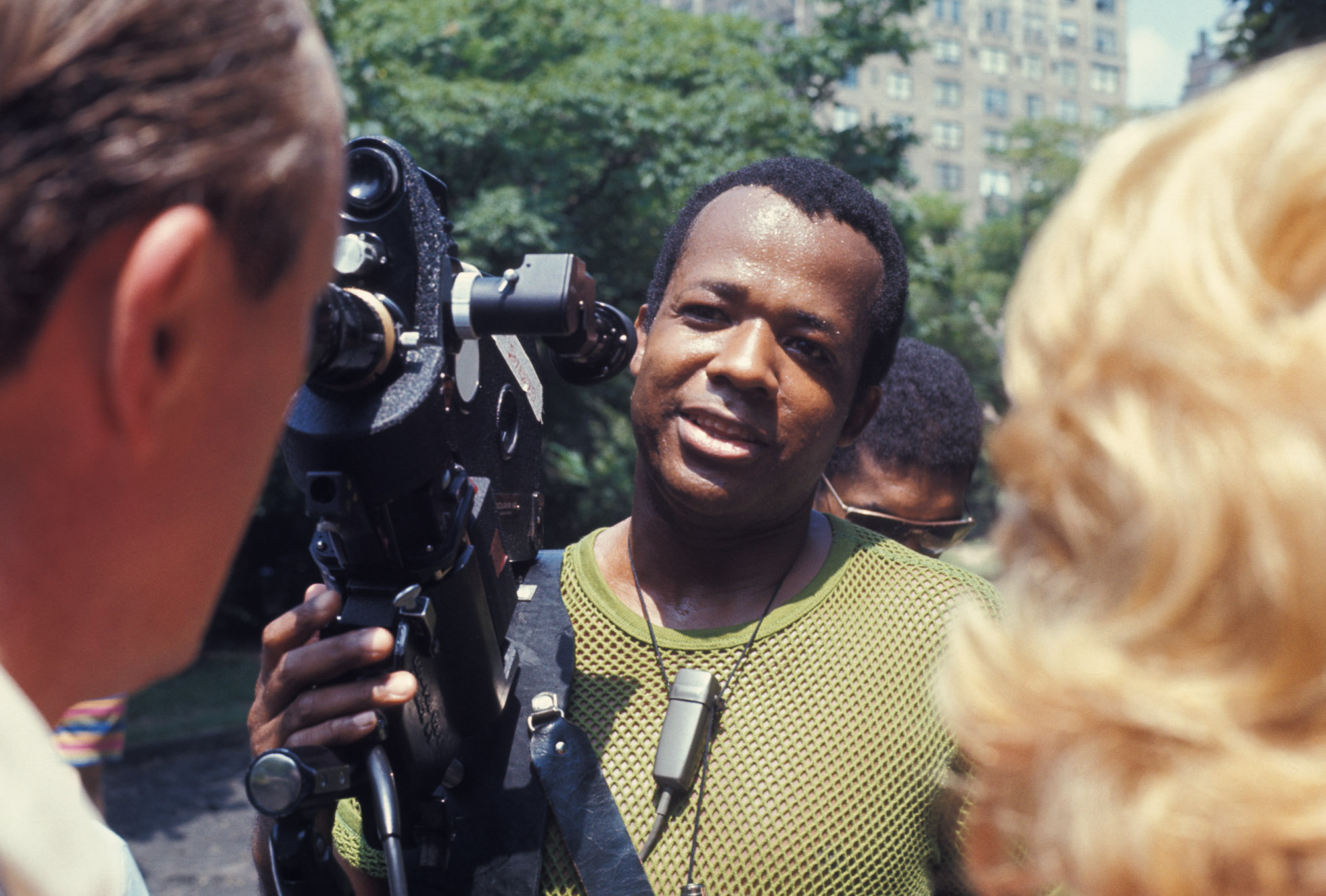Agency
7
Agency7

I Am Somebody (1970)
Theme Overview
The civil rights and Black Power movements, along with the women’s rights movement and protests against the Vietnam War, urban blight, and unemployment, significantly influenced moviemaking in the 1960s and early 1970s. Black cinema made at this time promoted cultural nationalism and self-reliance. Meanwhile, Hollywood was experiencing an economic lull: television was growing in popularity, audiences were losing interest in lighthearted movies, and major film company monopolies were being broken up.
This section features five Black directors active during this period—Madeline Anderson, Robert L. Goodwin, William Greaves, Gordon Parks, and Melvin Van Peebles—whose films provided the spark for a new era that began around 1971. Many elements that would later emerge in so-called blaxploitation movies, including Black empowerment and youth-oriented high-action drama, are reflected in the works presented here. Some films highlighted community issues and women’s rights via documentary, while others adopted a more expansive approach to narrative film, but all were committed to engaging and embodying Black communities. This common thread is also evident in early cinema and the race film era. Ultimately, these filmmakers serve as a reminder of the incredible power of visual storytelling.
Featured Essay
William Greaves: From These Roots
Scroll To Explore
In this excerpt from his essay for Regeneration’s companion volume, award-winning documentary filmmaker Shola Lynch looks back at how independent filmmaker William Greaves created films that connected generations and spanned multiple eras of Black history.
During his pioneering career William Greaves (1926–2014) worked on an immense body of documentary films as a producer, director, writer, editor, or cameraman, including some experimental hybrid narrative films. [1] Despite living through the Great Depression and World War II, Greaves forged new ground in a craft that drew him despite its impractical nature in a segregated America.
Born in Harlem, he considered himself “drenched in the afterglow of the Harlem Renaissance.” [2] He grew up down the street from the Harlem branch of the New York Public Library, which became a nexus for Black thought with the purchase of the bibliophile Arturo Schomburg’s ten-thousand-item collection of books, photographs, and artworks in 1926. Black history also lived and breathed through the people Greaves encountered in his neighborhood, including the filmmaker Oscar Micheaux, the poet Langston Hughes, the historian Leo Hansberry (the playwright Lorraine Hansberry’s uncle), the songwriter Eubie Blake, and the actors Canada Lee, Ruby Dee, and Ossie Davis.

William Greaves (left) in Lost Boundaries (1949), production still. Courtesy AMMP Resource Collection.
The library also housed the American Negro Theater, where the young student made his acting debut in 1944. Greaves remembered getting “terrible reviews” but began to study and worked on various productions. He appeared in the musical race film Sepia Cinderella (1947), and earned a reasonable level of success with named roles in Miracle in Harlem (1948) and the William Alexander productions The Fight Never Ends (1948) and Souls of Sin (1949). In 1949 Greaves also appeared in Lost Boundaries, and behind the scenes he apprenticed with the film’s producer, Louis Rochemont.
Greaves found himself frustrated by the limited and often stereotypical character types available to Black actors. He gravitated to working behind the camera “to produce films that in one way or another paid either homage to the African American experience or to Africa and that variously would attack the outrageous vilification campaign that had been launched against Black people ever since the end of slavery.” Embarking on what would become his lifelong mission, he resolved to “try and make films that would balance the scale somewhat.”

William Greaves in Symbiopsychotaxiplasm: Take One (dir. William Greaves, 1968), film still.
After he left school, Greaves spent over a decade honing his craft, making films for the National Canadian Film Board, the United Nations, and the United States Information Agency. But it was not until 1968, with the tragic assassination of Martin Luther King Jr. and the summer of rage and uprisings that followed, that mission met opportunity for Greaves. Uniquely qualified and already a seasoned director, Greaves became involved with a new public affairs program aptly titled Black Journal, which broadcast from National Educational Television’s New York affiliate. When he took the creative reins, Greaves recognized the opportunity given that “America was a heavily apartheid nation, and nothing was more apartheid than the motion picture industry.”
Greaves’s 1968 experimental fiction-documentary hybrid, Symbiopsychotaxiplasm: Take One, a metatextual film, would be rediscovered in 1992, distributed in 2005, and added to the Library of Congress’s National Film Registry in 2015. [3] The rest of his life’s work remains to be fully explored. [4]
Full essay available in the Regeneration: Black Cinema 1898–1971 exhibition catalogue, available for purchase at the Academy Museum Store.
[1] Spencer Moon, Reel Black Talk: A Sourcebook of 50 American Filmmakers (Westport, CT: Greenwood, 1997), 126. For Greaves’s filmography, see http://www.williamgreaves.com/william-greaves-biography-filmography/.
[2] William Greaves, video oral history interview conducted by James Briggs Murray, curator, Moving Image & Recorded Sound Division, Schomburg Center for Research in Black Culture, New York Public Library, 2001. Unless otherwise noted, all quotations from Greaves and biographical details are from this interview.
[3] Richard Brody, “The Daring, Original, and Overlooked Symbiopsychotaxiplasm: Take One,” New Yorker, February 5, 2015, https://www.newyorker.com/culture/richard-brody/daring-original-overlooked-symbiopsychotaxiplasm-take-one.
[4] The William Greaves archive is held by the Schomburg Center for Research in Black Culture. On the discovery of this rich repository, see Shola Lynch, “Revealing Greaves: Unhiding His Archive,” in William Greaves: Filmmaking as Mission, ed. Scott MacDonald and Jacqueline N. Stewart (New York: Columbia University Press, 2021), 413.
Shola Lynch is an award-winning American filmmaker best known for the internationally acclaimed feature documentaryFree Angela and All Political Prisoners(2013) and the Peabody Award–winning documentary Chisholm ’72: Unbought & Unbossed(2004). Her independent films and other collaborative projects feed her passion to bring history alive with captivatingstories of people, places, and events. Since 2013 she has also served as curator of the Moving Image and Recorded Sound Division of the New York Public Library’s Schomburg Center for Research in Black Culture. In 2016 Lynchbecame a member of the Academy of Motion Picture Arts and Sciences.
Essays
Article
William Greaves: From These Roots
Award-winning documentary filmmaker Shola Lynch looks back at how independent filmmaker William Greaves created films that connected generations and spanned multiple eras of Black history.
Article
Object Spotlight: Hat Worn by Melvin Van Peebles in Sweet Sweetback’s Baadasssss Song (1971)
Article
Object Spotlight: Union Hat from I Am Somebody (1970)
Article
Object Spotlight: Slate Used During Production of Ralph Bunche (1997)